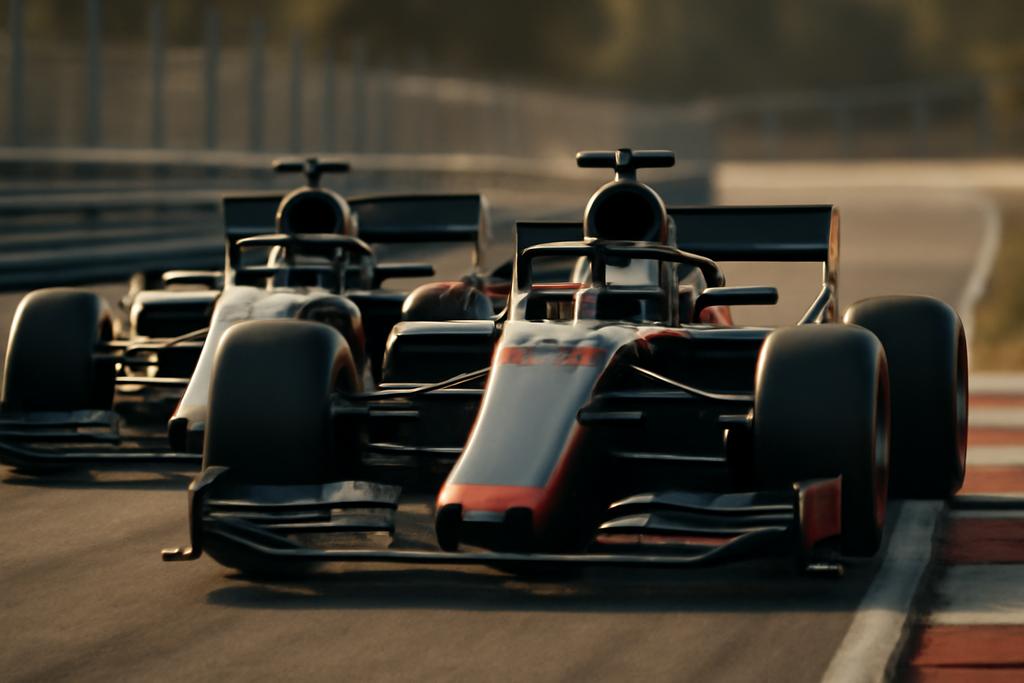The Perilous Dance of Autonomous Overtaking
Autonomous vehicles are getting remarkably good at navigating complex environments. But even the most advanced self-driving systems still face a profound challenge: high-speed overtaking maneuvers. Imagine two Formula 1 cars, hurtling down a track at breakneck speed, poised for a wheel-to-wheel pass. The margin for error is minuscule; a slight miscalculation could lead to a catastrophic collision. This is a domain where precise, real-time risk assessment is not merely desirable—it’s absolutely crucial.
The Problem of Probabilistic Collision Risk
The core challenge lies in accurately predicting the probability of a collision during such a maneuver. The problem is fundamentally probabilistic: you know your car’s trajectory, but the opponent’s future movements are uncertain. Existing methods, like those employing simplified geometric approximations (think bounding circles around cars), tend to overestimate the risk, often leading to overly cautious maneuvers that sacrifice speed and efficiency. Other approaches focus on instantaneous risk, neglecting the cumulative risk over the entire overtaking process.
Enter the Gauss-Legendre Rectangle (GLR) Algorithm
Researchers at [University or research institution name not provided in source] have developed a novel algorithm called Gauss-Legendre Rectangle (GLR) to address this problem. Led by Trent Weiss and Madhur Behl, this approach elegantly avoids the pitfalls of previous methods. Instead of resorting to simplistic geometric models, GLR retains the full rectangular shape of the racing cars, leading to a more realistic assessment of the collision potential.
The brilliance of GLR lies in its two-stage approach. First, it computes the instantaneous collision probability at various points in time using a technique called Gauss-Legendre Cubature. Think of this as a highly refined way to precisely calculate the overlap probability of the two rectangular vehicles at a given moment.
The second stage is equally clever. It integrates these instantaneous probabilities over time, effectively calculating the cumulative risk of collision throughout the entire overtaking maneuver. This integration uses a non-homogeneous Poisson process, a powerful mathematical tool for modeling events that happen randomly over time, but with a rate that can change. This is vital because the likelihood of a collision changes dynamically during an overtaking maneuver. The closer the cars get, the higher the risk becomes.
Accuracy and Speed: A Winning Combination
The researchers tested GLR against five state-of-the-art baseline methods on a dataset of 446 high-speed overtaking scenarios simulated using a high-fidelity Formula 1 racing simulator. The results were impressive. GLR achieved an average error reduction of 77% compared to the best of the existing methods, with a stunning 52% improvement over the next-best algorithm. Moreover, it does this at an incredibly fast speed of 1000 Hz, ensuring its practicality in real-time racing applications.
Beyond Racing: A Generalizable Approach
While initially conceived for autonomous racing, the elegance and efficiency of GLR extend far beyond this specific application. The core principles—precise spatial analysis coupled with sophisticated temporal integration—make it readily adaptable to a broad range of motion planning problems wherever precise risk estimation under uncertainty is critical. Imagine using GLR for safer drone navigation in crowded airspace, optimized robot movement in busy warehouses, or even predicting the risk of collisions in highly dense traffic scenarios. The implications are significant and far-reaching.
The Human Element: Intuition and Precision
What makes the GLR algorithm particularly compelling is the blend of mathematical sophistication and intuitive practicality. The approach leverages powerful mathematical techniques but avoids the trap of overly complex or computationally demanding algorithms. The researchers’ focus on a balance between accuracy and speed reflects a deep understanding of the demands of real-world applications. This is critical. A perfect prediction algorithm that runs too slowly to be useful is simply not valuable.
The Future of Safe Autonomous Systems
The success of GLR offers a promising glimpse into the future of safe autonomous systems. As we increasingly rely on AI to navigate complex, dynamic environments, the need for accurate and efficient risk assessment becomes paramount. The GLR algorithm, with its demonstrated performance and generalizability, provides a significant step forward toward making autonomous systems not only intelligent but also profoundly safe.










